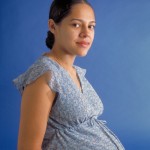For clinicians who have not yet discovered the incredibly thoughtful and clinically practical monthly articles from Chittaranjan Andrade in the Journal of Clinical Psychiatry, it’s time to take a look. (Not only are these articles fantastic, they’re free!!) In the May issue, Dr. Andrade provides a thorough review of the risks associated with valproic acid use during pregnancy. Summarizing recent data from Weston (2016) and Veroniki (2017), he notes some important findings regarding the use of valproic acid during pregnancy.
- The absolute risk of major malformations with valproate was 10.93% (95% CI, 8.91–13.13).
- In children with in utero exposure to valproate (N = 467), relative to children born to women without epilepsy (N = 1,936), there was a fivefold increase in risk of congenital malformations (relative risk [RR] = 5.69; 95% confidence interval [CI], 3.33–9.73).
- Valproate use during pregnancy has been associated with a significantly higher risk of neural tube, cardiac, orofacial/craniofacial, and skeletal and limb malformations.
- The risk of major malformations with valproate is dose-dependent.
Valproate was the only anticonvulsant to be significantly associated with both cognitive delay (odds ratio [OR] = 7.40) and language delay (OR = 7.95). Valproate was also associated with psychomotor delay (OR = 4.16) and autism/dyspraxia (OR= 17.29).
Dr. Andrade notes that in most parts of the world, sodium valproate, valproic acid, and related formulations are approved for the treatment of seizure disorders, bipolar disorder,, and migraine. Because valproic acid is an older, and therefore less expensive compared to some of the newer anticonvulsant drugs, valproic acid continues to be included in many formularies as a treatment for bipolar disorder.
While certain countries, including France and the United Kingdom, have taken steps to limit the use of valproic acid in reproductive age women, many countries lag behind. The World Health Organization regularly publishes a “Model List of Essential Medications”, which is used by many developing countries to guide the provision of basic health care. The most recent rendition of the list, updated in 2017, lists three medications for the treatment for bipolar disorder: valproic acid, lithium, and carbamazepine.
Dr. Andrade notes that, despite a growing concern about the use of valproate in women of reproductive age dating back to the 1970’s, prescribing behaviors have not changed significantly. Looking at the use of medications enrolled in the New York State Medicaid program, Wisner and colleagues found that among 40,526 individuals taking non-antipsychotic mood stabilizers, valproate was the most commonly prescribed drug among young women (23.4%). According to a 2012 study, the US Food and Drug Administration observed that approximately 22% of all prescriptions for valproic acid were given to women of reproductive potential (age 13–45 years).
Back in 2009, the American Academy of Neurology and American Epilepsy Society recommended against the use of valproic acid in women of childbearing age because of the various risks associated with prenatal exposure. Raising similar concerns, in 2014 the European Medicine Agency (EMA)’s Pharmacovigilance and Risk Assessment made the following specific recommendations regarding the use of valproic acid in this population:
- If possible, an alternative to valproic acid should be used in women of reproductive age
- If valproic acid is the only option, women should use effective contraception and should be closely supervised.
- Doctors who prescribe valproic acid to women of reproductive age must review the reproductive risks associated with this drug and must clearly explain the reason for choosing valproic acid over other options.
- Women taking valproic acid should also take 4mg of folic acid daily to reduce the risk of birth defects and neurobehavioral sequelae in the setting of unplanned pregnancy. (Note: While there are data to indicate that folic acid supplementation reduces the risk of autism/autistic traits in valproate-exposed children, it is unclear if folic acid decreases the risk of malformations in the population.)
Because half of all pregnancies are unplanned, it is vitally important that we discuss the reproductive safety of valproic acid, and all of the other medications, we prescribe to women of childbearing age. Ideally this conversation should address future plans for pregnancy, contraceptive use in sexually active women, and the importance of folic acid supplementation.
Ruta Nonacs, MD PhD
Andrade C. Valproate in Pregnancy: Recent Research and Regulatory Responses.
J Clin Psychiatry. 2018 May 29;79(3). Free Article
Veroniki AA, Rios P, Cogo E, et al. Comparative safety of antiepileptic drugs for neurological development in children exposed during pregnancy and breast feeding: a systematic review and network meta-analysis. BMJ Open. 2017;7(7):e017248.
Weston J, Bromley R, Jackson CF, et al. Monotherapy treatment of epilepsy in pregnancy: congenital malformation outcomes in the child. Cochrane Database Syst Rev. 2016.
Wisner KL, Leckman-Westin E, Finnerty M, et al. Valproate prescription prevalence among women of childbearing age. Psychiatr Serv. 2011;62(2):218–220.








Leave A Comment